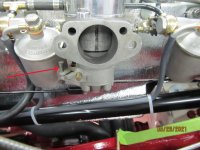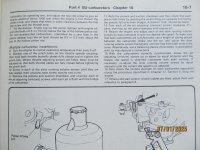Offline
Evening all,
I am having some carburation issues and was wondering if swap from my current HD6 set up to a pair of HS6 would it raise any issues other than some pipe rework?
I am asking because I can purchase a pair of HS6 refurbished at a reasonable price, alternatively could buy a refurb kit and do it myself and find I still have problems because my existing ones are worn out being 65+ years old. I am making the assumption that HS6 are better than HD6???
Any thoughts appreciated
Cheers Phil
I am having some carburation issues and was wondering if swap from my current HD6 set up to a pair of HS6 would it raise any issues other than some pipe rework?
I am asking because I can purchase a pair of HS6 refurbished at a reasonable price, alternatively could buy a refurb kit and do it myself and find I still have problems because my existing ones are worn out being 65+ years old. I am making the assumption that HS6 are better than HD6???
Any thoughts appreciated
Cheers Phil

 Hi Guest!
Hi Guest!

 smilie in place of the real @
smilie in place of the real @
 Pretty Please - add it to our Events forum(s) and add to the calendar! >>
Pretty Please - add it to our Events forum(s) and add to the calendar! >> 




